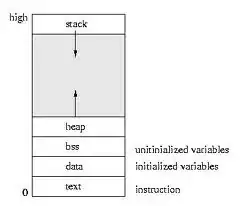The following image shows where the sections of a process are laid out in the process's virtual address space:
You can see that there is only one stack section (since this process only has one thread I assume).
But what if this process has another thread, where will the stack for this second thread be located? will it be located immediately below the first stack?
